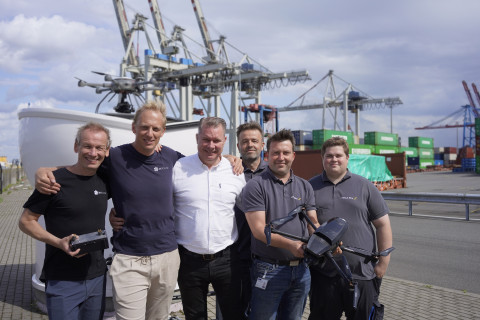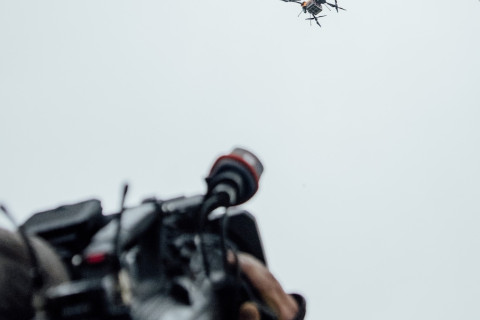How our X4 Drone was Designed to Meet Both First Responder & Industrial Needs

After winning the "best of the best" Red Dot Design Award in 2023, we want to give you a closer look at our X4 drone and what makes it so impressive. It was developed in a short period of time with an interdisciplinary team of industrial designers and security, drones and IT experts. It can meet the needs of a wide range of stakeholders, from first responders to security and surveillance use cases, outfitted with advanced features, a rugged design and an exceptional flight time of >28 minutes that will change the industry.
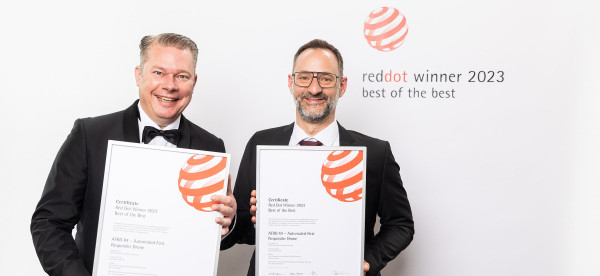
A Quick Glance at the X4 Industrial-grade Quadcopter
The X4 delivers industrial-grade quadcopter performance in a sub-4 kg drone class, enabling low-noise operations ideal for rapid response missions. With cybersecurity in mind, the X4 features an end-to-end encrypted data link and a parachute for secure operations. In addition to its lightweight design, the X4 offers payloads for RGB or combined RGB/IR sensors, with the ability to remotely access the drone or switch to manual operations if required.
During the design process, we've also incorporated a feature that allows for the identification and tracking of moving objects such as vehicles or people using our Dragon Eye 2 camera, which is equipped with full HD RGB sensors and optical image stabilization with 40x zoom capability, as well as thermal sensors with 640x480 pixel resolution and 4x zoom capability.
A quick glance at the X4 reveals a lightweight and compact drone that's perfect for subtle security and surveillance applications. Despite its lightweight design, it's prepared for the most extreme scenarios as it's IP54 protected, easy to transport and ready to launch in seconds. This design is ideal considering that HHLA Sky's Integrated Control Center (ICC) is capable of simultaneously controlling up to 100 or 200 X4 drones beyond visual line of sight (BVLOS) and is the world's first IEC 62443 cybersecurity-certified Mobile Robot Management system.
When the X4's design won the Red Dot Award, with the judges saying it showed "intelligent design down to the last detail," we knew that not only was the world ready for a highly scalable, safe and efficient drone solution, but that it had been looking for innovative new technologies to meet these needs for some time, especially for first responders and industrial companies. That's probably why the X4 has been called "one of the best drones in recent years.”
Lars Neumann, Director of Logistics at HHLA, commented: "The Red Dot Award is one of the most prestigious design awards and shows HHLA Sky as a pioneer in the European drone industry. This award is further proof of HHLA's successful strategy to develop and promote technological innovations and new business models for logistics".

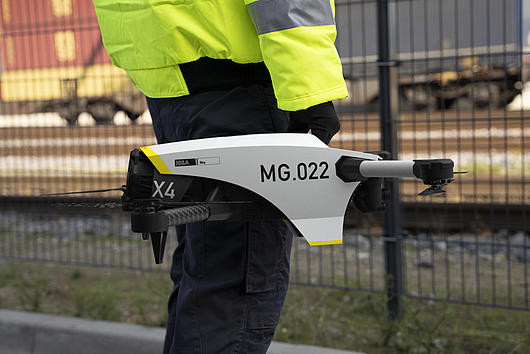
Why is Recognition from the Red Dot Award Crucial?
The Red Dot Award follows a design tradition that goes back more than 60 years, when the first Verein Industrieform was founded on July 30, 1954 by the head of Krupp's public relations and advertising department, Professor Dr. Carl Hundhausen. The aim was to modernize consumer goods in Germany and to change the image of Krupp after World War II. In 1955, the first annual design competition was held in Essen to present innovative consumer goods that would set standards and serve as models for future developments.
The award has changed several times over the years: first moving away from a design management focus and toward a function of education and communication for companies that want to gain an international competitive advantage through design. In 1993, this focus on communication became the German Prize for Communication Design, which was organized under the name Red Dot Award: Communication Design, which was later renamed the Red Dot Award: Brands & Communication Design. In 2005 the Red Dot Award: Design Concept was created to allow designers, manufacturers and universities to also enter the competition.
18,000 entries are received from design professionals, companies and organizations from over 70 countries due to the jury’s internationally renowned reputation for spotting and recognizing quality. In fact, the Red Dot Award is one of the largest and most respected design competitions in the world. This award is exactly what the drone industry needs, as it is incredibly young, so recognition from one of the oldest and most prestigious design awards in the world helps prove the business cases that drones can bring to various industries.
But even this potential is difficult to realize because it requires acceptance by the communities that will coexist with these new technologies. Just as some people resisted the replacement of horses by automobiles or typewriters by word processors, drones will cause a shift in how we experience the world around us and perform our jobs.
The Red Dot Award lends a level of credibility and viability to drones as an industry and a natural evolution of technology and design.
Upcoming drone innovations as enablers of wide-scale acceptance of autonomous drones
Soon, the world will build networks of interconnected drones that are brought together in U-space airspaces and controlled autonomously. What exactly does this mean? To briefly summarize, regulations are currently being created to allow for the gradual integration of autonomous drone operations beyond the visual line of sight (BVLOS). This will allow organizations to send drones to different locations via control centers while automating safety procedures.
These automations include more than just the ability to fly, which has been possible for drone applications for the past few decades. This level of autonomy, instead, encompasses the entire flight and data cycle, enabling remote iterations for multi-drone use cases.
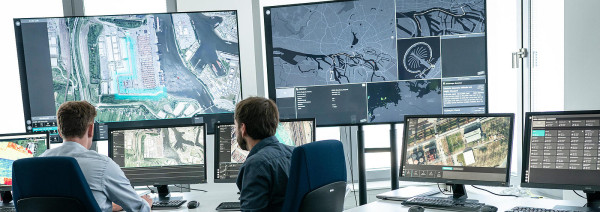
The best example we can provide is our own hometown of Hamburg, where the port infrastructure allows thousands of container ships to pick up and drop off goods every day. Unfortunately, however, Hamburg is experiencing a shortage of skilled workers to perform the multitude of inspections on a regular basis that are needed to maintain the integrity of existing structures. This labor shortage is expected to increase dramatically by 2035, and is already preventing organizations from filling 6 out of 10 open positions today.
Drones like the X4, developed to allow one operator to control more than 100 and perform many of these inspections remotely, reduce the need to over-hire for positions that cannot be filled in today's modern labor market. This allows critical infrastructure inspections to be performed timely and fully automated by drones, which helps us maintain the structural integrity of the logistics, transportation and manufacturing industries we rely on today.
Learn more
Ready to see how HHLA Sky can boost your operational efficiency to new heights? Contact us today.
